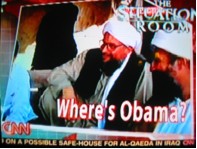The irrepressibly corrupt Kenneth Tomlinson has informed the White House that he will not seek renomination as chairman of the Broadcasting Board of Governors (BBG).
This is the same Kenneth Tomlinson that “improperly used his office, putting a friend on the payroll and running a “horse-racing operation” with government resources.”
This is the same Kenneth Tomlinson that presided over the Voice of America as it closed its Baghdad bureau because they could not retain journalists to staff it.
This is the same Kenneth Tomlinson who sheepishly resigned as chair of the Corporation For Public Broadcasting in advance of a report that found that he violated the Public Broadcasting Act of 1967.
This is the same Kenneth Tomlinson that paid $15,000 in payments to two Republican lobbyists that were not disclosed to the Corporation’s board.
This is the same Kenneth Tomlinson that had taken overtly partisan steps to remake the CPB as a publicly financed Fox News – hiring Tucker Carlson and Paul Gigot and recruiting a former co-chairman of the Republican National Committee as president of PBS.
This is the same Kenneth Tomlinson engaged in ethically-questionable tactics to discredit Bill Moyers, former host of PBS’ Now.
Now this same Kenneth Tomlinson is jumping ship rather than face the newly elected Democratic majority in the senate that would be unlikely to reconfirm him anyway. And in his message to the President, in a pique of denial and self-righteousness, he declares:
“I have concluded that it would be far more constructive to write a book on my experiences rather than to seek to continue government service. Accordingly, I ask that you nominate another person to serve as chairman of this board.”
I think we can expect that his book will reveal that he was a victim of the secular progressive cabal that his hero Bill O’Reilly rails against. We can expect that he will deny any wrongdoing and that he only tried to serve his country. Nevermind all the evidence against him, we can expect to learn that it was actually another scoundrel that was responsible for these misdeeds (probably Bill Clinton).
In short we can expect that the book will reveal the very same Kenneth Tomlinson. An alligator doesn’t change its scales.


 I have little to add to this graphic disaster.
I have little to add to this graphic disaster. 
